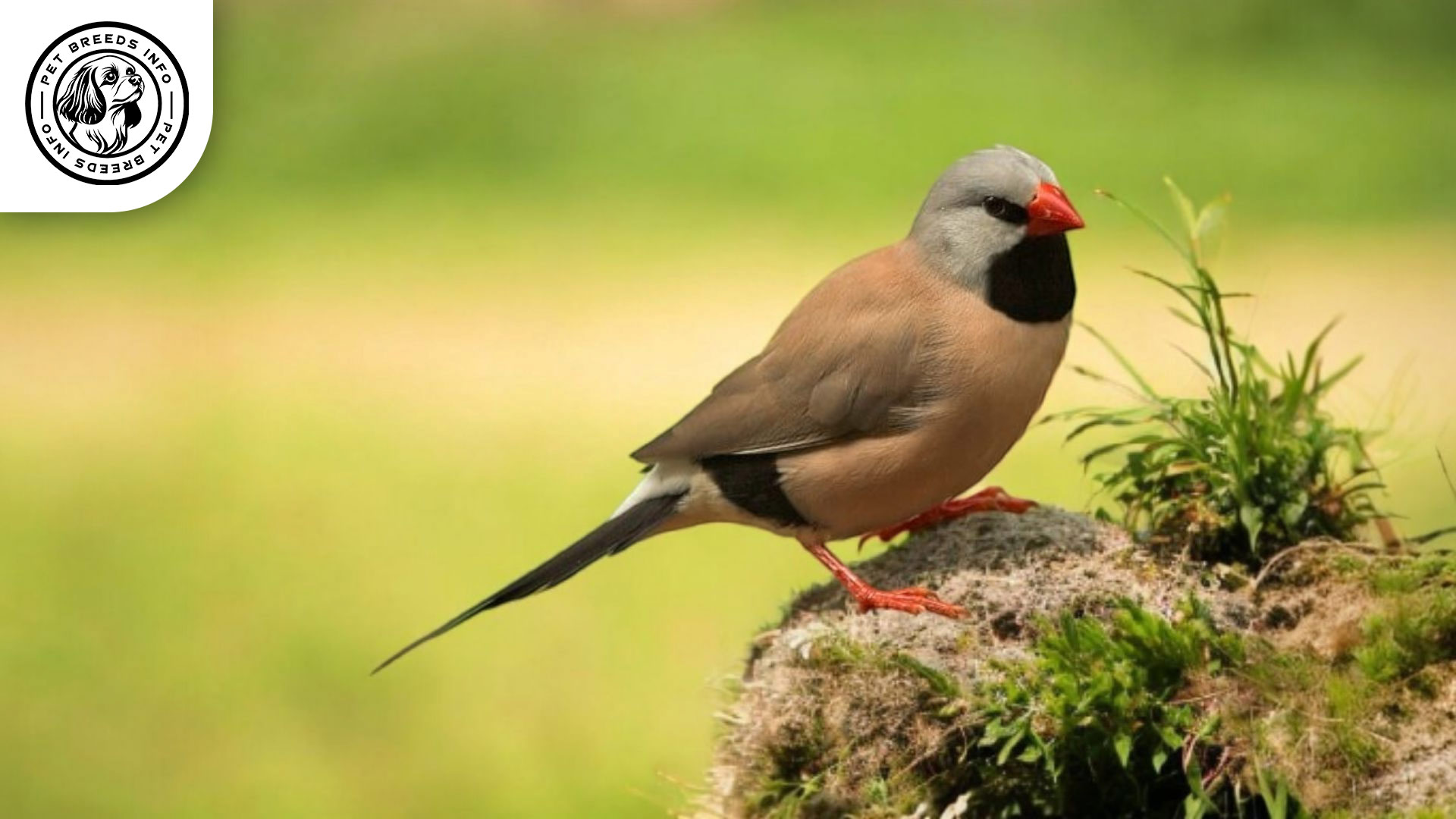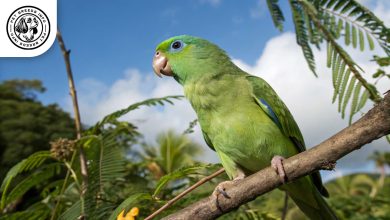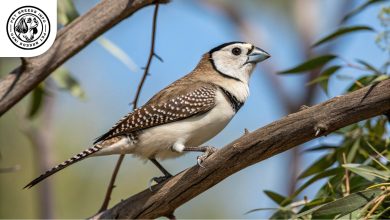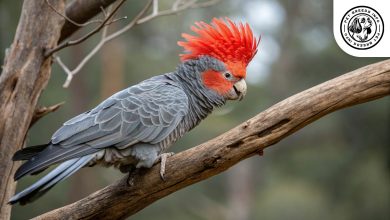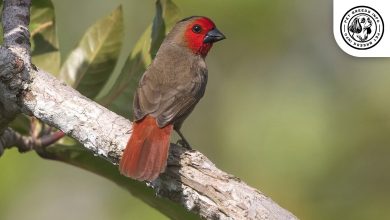Long-tailed Finch Breed: Personality, Lifespan, Food & Care
General Introduction of the Breed
The Long-tailed Finch (Poephila acuticauda) is a small and elegant bird species native to northern Australia. It is also known as the Shaft-tail Finch due to its distinctive elongated tail feathers. This finch is commonly found in open woodlands and grasslands, where it thrives in flocks.
The breed has been admired for centuries for its striking appearance and pleasant personality, making it a popular choice among avian enthusiasts. Due to its adaptability, it has been successfully bred in captivity worldwide.
Table of Contents
| Common Name | Long-tailed Finch |
| Scientific Name | Poephila acuticauda |
| Origin | Northern Australia |
| Size | 15–17 cm (5.9–6.7 inches) |
| Lifespan | 5–8 years |
| Colors | Brown, gray, black, yellow (bill variations) |
| Talking Ability | Low; soft chirping sounds |
| Noise Level | Low to moderate |
| Social Behavior | Highly social, gentle, flock-oriented |
Physical Characteristics
The Long-tailed Finch is a small bird, measuring around 15-17 cm in length, including its characteristic long tail. It has a slim and graceful body, with a weight of approximately 12-15 grams.
The plumage is predominantly soft brown and gray, with a distinctive black bib on the throat. There are two color variations: the nominate form, which has a black bill, and the yellow-billed variant.
The eyes are dark and round, adding to its alert expression. Its most distinctive feature is its long pointed tail, which gives the bird its name.
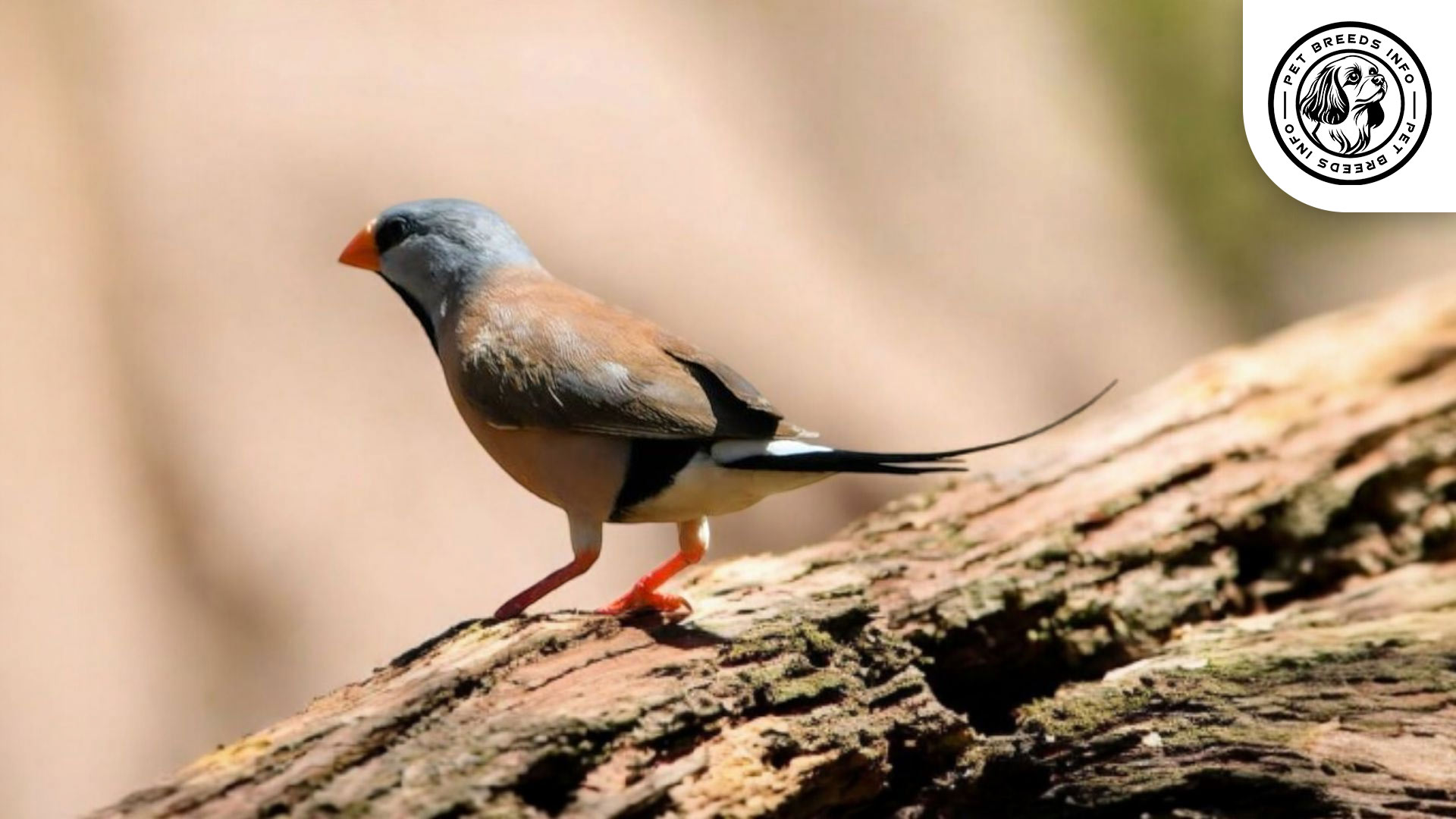
Personality and Temperament
The Long-tailed Finch is sociable and active, often seen in pairs or flocks. It is an intelligent bird with a gentle and calm disposition, making it a great choice for bird owners.
It enjoys socializing with its own species and can coexist peacefully with other finches in aviaries. While not as vocal as some other finches, it produces soft chirps and pleasant calls.
Long-tailed Finches respond well to routine and can become accustomed to human presence. While they are not typically hand-tame, they can be conditioned to trust their owners over time.
Care and Maintenance Requirements
These finches are highly active and require a spacious cage or aviary with horizontal flying space. A well-structured aviary with perches, branches, and nesting areas is ideal.
Grooming needs are minimal, as these birds are excellent self-groomers. Providing a shallow dish of water for bathing helps them maintain feather quality.
Read More: Grosbeak Weaverfinch
They are generally hardy birds but should be protected from extreme cold temperatures. A stable, draft-free environment is essential for their health.
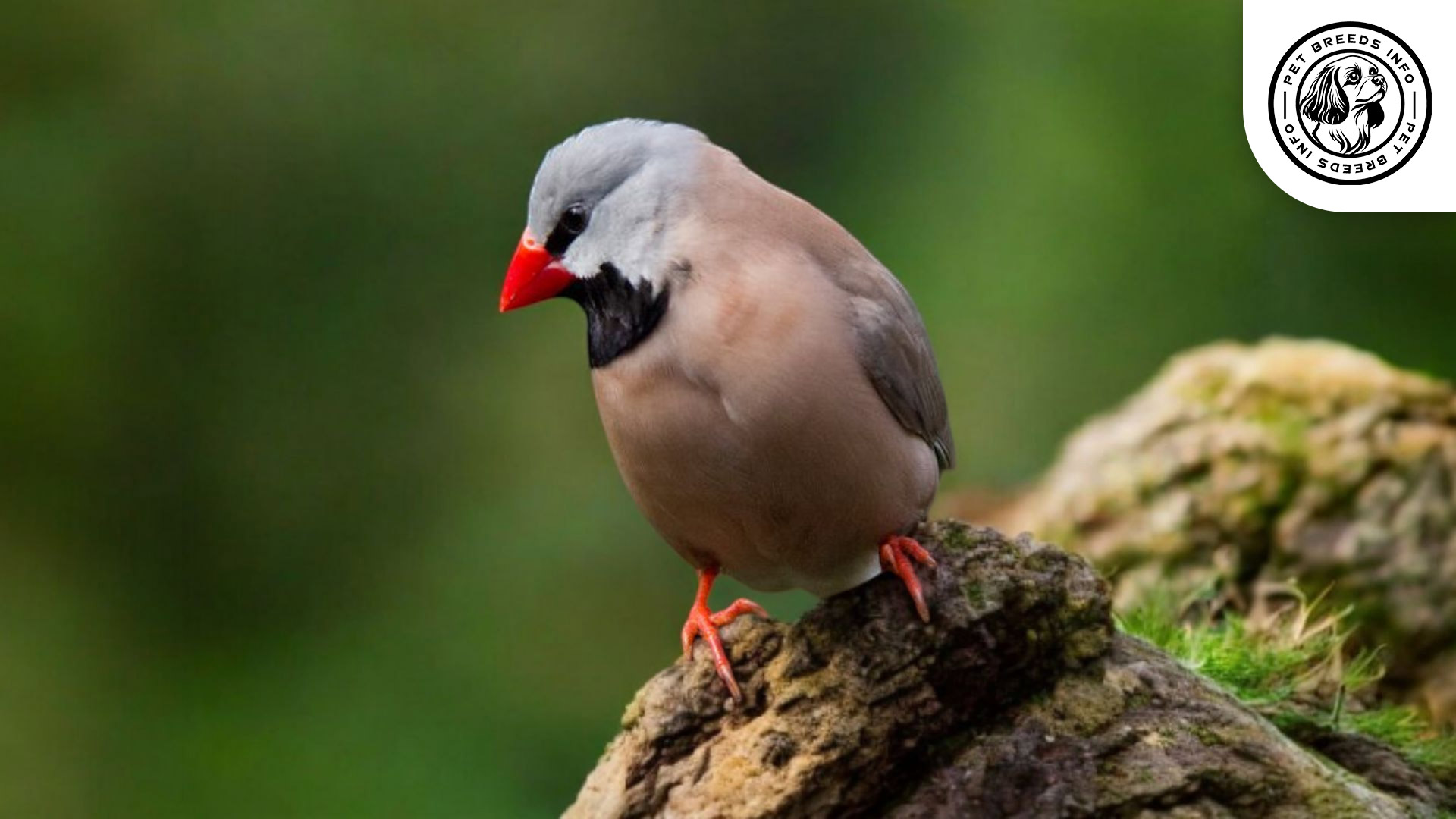
Diet and Nutrition
A Long-tailed Finch’s diet should consist of high-quality finch seed mixes, supplemented with fresh fruits, vegetables, and protein sources such as egg food or mealworms.
Avoid giving them avocado, chocolate, caffeine, or foods high in salt and sugar, as these can be toxic.
Fresh, clean water should always be available, and food portions should be monitored to ensure they are receiving a balanced diet.
Health and Common Medical Issues
Long-tailed Finches are generally robust, but they can be prone to respiratory infections and mite infestations if housed in poor conditions.
Regular health checks, a clean environment, and a balanced diet help prevent common ailments. Their average lifespan ranges from 5 to 8 years, though some may live longer with proper care.
Routine veterinary check-ups and vaccinations against common avian diseases are recommended to safeguard their health.
Read More: Lancashire Canary
Training and Behavior Management
These finches are not typically hand-tame, but they can be trained to become accustomed to their owners through positive reinforcement.
Providing a predictable routine and handling them gently from an early age can help reduce stress and build trust.
The best way to reinforce good behavior is through a calm and patient approach, offering treats or soft communication when they respond positively.
Interaction with Other Animals and Humans
Long-tailed Finches are highly social with birds of their own species and can be housed with other similar-sized finches, such as Zebra Finches or Gouldian Finches.
They are not aggressive and prefer the company of their flock, making them excellent companions in aviary settings.
While they do not form deep emotional bonds with humans like parrots, they are pleasant and entertaining to observe.
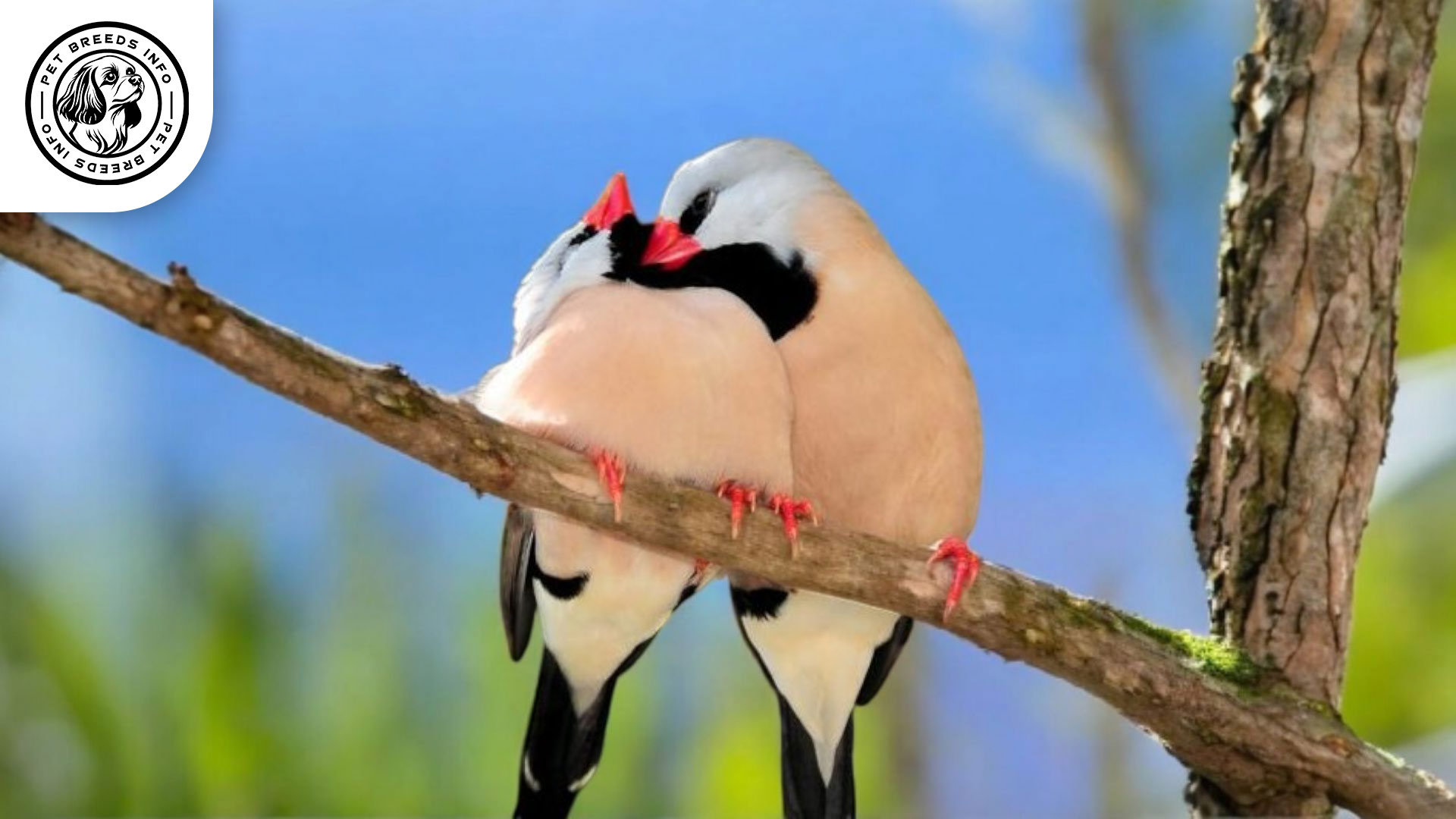
Price and Availability
Long-tailed Finches are relatively affordable, with prices ranging from $30 to $80 per bird, depending on their color morph and breeder reputation.
It is recommended to purchase from reputable breeders or avian rescue organizations to ensure the birds are healthy and ethically sourced.
Avoid purchasing from pet stores with questionable breeding practices, as these birds may have underlying health issues.
Conclusion and Final Thoughts
The Long-tailed Finch is a wonderful bird choice for those looking for a low-maintenance, visually appealing pet. It is best suited for aviaries or spacious enclosures where it can fly freely.
Read More: Lizard Canary
Potential owners should be aware of their social nature and consider keeping them in pairs or groups to ensure happiness.
With proper care, a balanced diet, and a clean environment, Long-tailed Finches can thrive and bring joy to both beginner and experienced bird enthusiasts.
FAQ
What makes the Long-tailed Finch unique?
Its distinctive long, pointed tail and soft, pleasant chirps make it stand out among finch species.
Are Long-tailed Finches good for beginners?
Yes, they are hardy, low-maintenance, and thrive in social environments, ideal for beginner bird owners.
Can Long-tailed Finches live with other birds?
They coexist peacefully with other similar-sized finches and do best when kept in pairs or small groups.
What do Long-tailed Finches eat?
A balanced diet of finch seed mix, fresh fruits, vegetables, and occasional protein like egg food or mealworms.
How much space do Long-tailed Finches need?
They require a spacious cage or aviary with horizontal flying space and plenty of perches and enrichment.
